Film Name: 南京照相館 / Dead To Rights
I took advantage of the advance screening to watch the new film “Dead To Rights” and found it to be much better than I had anticipated. It did not waste the heavy historical subject matter of the Nanjing Massacre. Personally, I feel that it is the most promising film of the summer season.
In the past, when we made films with similar grand themes, we often fell into the trap of “overemphasizing the big picture at the expense of the details,” resulting in films that were filled with emotion and slogans but lacked concrete elements and memorable moments. What makes this film stand out is that it prioritizes telling the story of people and events, while gradually incorporating glimpses of Japanese atrocities to enrich the depth of the narrative.
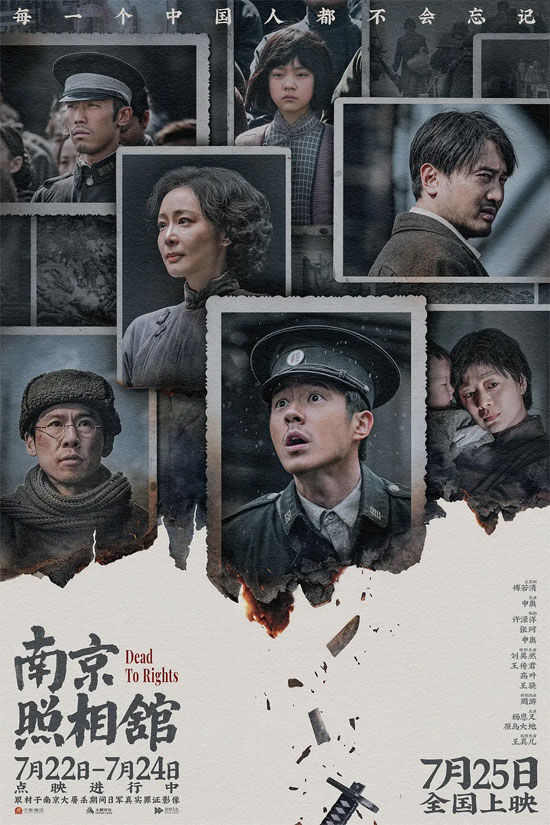
To be honest, I underestimated director Shen Ao: in 2019’s “My Dear Liar,” he only showed average talent, and in the previous summer blockbuster “No More Bets,” I felt he relied on the subject matter to succeed. However, “Dead To Rights” is an even more challenging subject matter to film, yet Shen Ao demonstrated a seasoned and sharp side. The story is well-told, with many details added, and even though the pacing in the final part is slightly off-balance, it does not detract from the fact that this is a highly watchable film.
With such outstanding storytelling, we can truly appreciate the weight of the phrase “Never forget national humiliation; we must strive to strengthen ourselves.”
[Friendly reminder: The following text contains spoilers.]
What makes “Dead To Rights” so compelling, without succumbing to the grim and chaotic atmosphere of the massacre, is that the film stays firmly focused on a single narrative thread: taking photos, developing photos, and delivering photos.
After Nanjing fell, mailman Su Liuchang (Ah Chang) lied to Japanese photographer Ito Hideo, claiming to be a photography apprentice who could help develop photos, in order to save his life. He then discovered Jin Chengzong (Old Jin) and his family hiding in the Jixiang Photo Studio . Soon after, translator Wang Guanghai brought his lover Lin Yuxiu and deserter Song Cunyi to the studio. The film’s perspective revolves around this group of people struggling to survive inside and outside the photography studio.
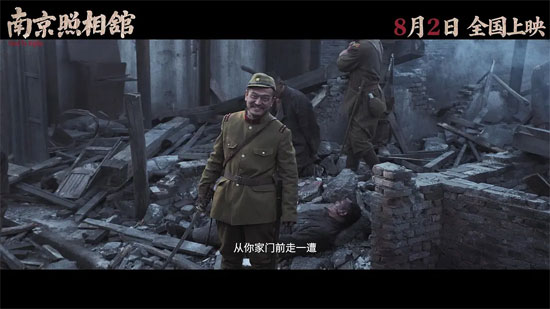
For example, on their way to the photography studio, Achang and Wang Guanghai used a series of shots with constantly changing subjects to depict the scene of Nanjing City turning into a living hell.
Countless civilians were brutally murdered by Japanese troops in various ways—executed by gunfire, beheaded, hanged, or disemboweled. Many Japanese soldiers took pleasure in these acts, gazing at Ah Chang and his companions with the same gaze one might reserve for prey or playthings. There was also the woman who knew Wang Guanghai, desperately seeking help, only to be dragged away by Japanese troops and raped…
These scenes are not sensationalized; there is no gratuitous focus on the acts of slaughter. Instead, they often use wide shots and moving camera angles, which not only maintain a basic respect for the victims but also recreate the brutal reality through restrained imagery.
When the focus shifts to the main characters, the sense of pain does not diminish. Though direct depictions of slaughter are reduced, they are replaced with more hypocritical and evil actions.

For example, when Ah Chang and Yu Xiu are summoned to participate in the filming of a fake propaganda photo titled “Sino-Japanese Friendship,” the truck they ride must traverse a sea of corpses and blood to reach a relatively intact street. The “law-abiding citizens” are manipulated by the Japanese troops like puppets on strings, and the only infant who cannot be controlled is thrown to the ground to silence its cries.
But such atrocities did not end there; they escalated further. The infant who had just been thrown to death was immediately placed in Yu Xiu’s arms, and the photographic theme shifted from the couple to a family of three. This photo was highly praised by Tanaka Shigeo, who deemed it to have achieved the ideal effect of friendship…
Besides Ah-chang and others, the portrayal of the Japanese army in “Dead To Rights” is also very three-dimensional and accurate, especially the deceptive Ito Hideo.
At first, he is portrayed as a nobleman’s son who only knows how to take photos and refuses to fire a gun (Wang Guanghai, who is constantly deceiving himself, clings to the notion that “even among the Japanese officers, there are kind-hearted people”). However, as the plot unfolds, it becomes clear that Ito is merely hypocritical. He does not kill people not out of kindness, but because he fears getting his hands dirty.
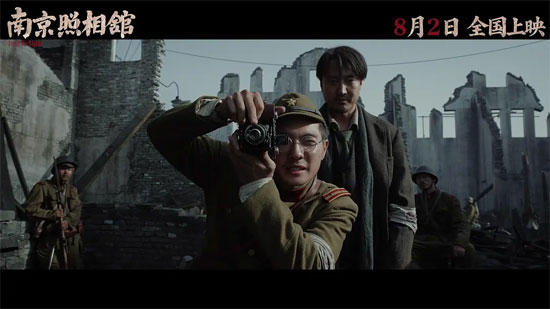
The film cuts together scenes of Ito pressing the shutter button with soldiers loading bullets, pulling the trigger, and bayoneting, explicitly showing that he is also a bloodstained executioner. However, he hypocritically tells Achang, “We are friends,” after all, the other party is his servant who develops his photos.
But when things don’t go his way, Ito’s true colors show: he complains about the baby crying, then blames the death of a child for ruining the photo shoot atmosphere; when picking up someone from the brothel, he sees his new subordinate covered in syphilis sores but shows no disgust, only impatience; when Ah Chang and the others try to resist, he shoots Wang Guanghai dead, saying, “How dare a dog bite its master?”
There was also Tanaka Shigeo, who was skilled at putting on a show, shamelessly explaining Ito’s fickle and treacherous actions as a clever demonstration of “benevolence, righteousness, propriety, wisdom, and integrity.” When Ito committed seppuku, Tanaka directly shot him in the back of the head to assist in his death…
It is clear that the Japanese invaders’ understanding of Chinese culture and their so-called samurai code were nothing but a farce, a pretense of sophistication.
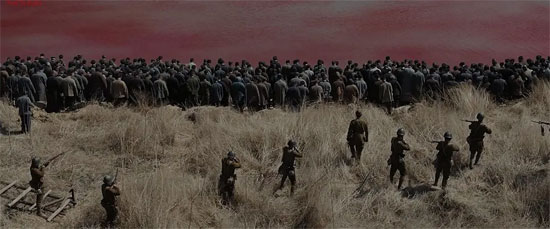
As the story unfolded around the photographs, the people at the吉祥照相馆 gradually changed. They evolved from a group of people who only wanted to survive into those with a sense of resistance.
Song Cunyi was a police officer conscripted into a irregular army as cannon fodder. He had no shame in feigning death to desert, and he didn’t feel embarrassed when the Jin family treated him like a hero. But when he saw the photo of his only brother being killed, he broke down. Ultimately, he acted alone, using bricks from the walls of Nanjing City to kill a Japanese soldier.
Lin Yuxiu had once fantasized about befriending the Japanese to rise above others, but after being humiliated by the Japanese and witnessing their atrocities, she recalled the characters Mu Guiying and Liang Hongyu she had sung about in her theatrical training. When the Japanese attempted to rape her again on Black Island, she displayed a fierce resolve to die rather than submit.
Wang Guanghai, who had always believed the Japanese were invincible and intended to remain a collaborator to the end, finally erupted with a last shred of humanity in an unbearable situation. The only consolation is that he died resisting.
The best part is the attitude of Ah Chang and the Lao Jin family toward the photos.
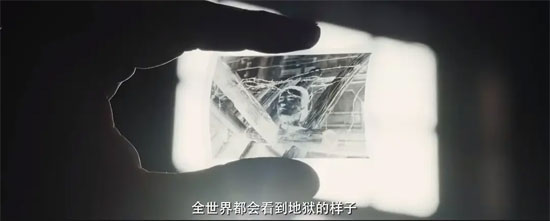
At first, they had to develop Ito’s photographs to survive. As the Nanjing Massacre unfolded, they grew increasingly reluctant to develop the photographs, viewing it as a traitorous act. By the later stages, they realized the photographs were evidence of the Japanese army’s inhumane atrocities and sought every means to smuggle them out.
The transformation of these ordinary people serves as a metaphor for the awakening and resistance of the Chinese people: if one remains numb and indifferent, then no matter how many people there are, they are merely a flock of lambs awaiting slaughter. However, as long as there are those who refuse to submit to humiliation and dare to resist, the spark of resistance will eventually ignite a prairie fire.
There is a particularly apt scene in the film where Ito casually opens the darkroom door while Ah Chang is practicing developing photos and dismissively says, “Chinese photos aren’t important.” Yet in the end, Lao Jin and the others deliberately replace his negatives with “unimportant ones,” symbolizing that the Japanese invaders never anticipated that the four hundred million ordinary people they had disregarded would not only rise up in resistance but ultimately defeat them.
Speaking of this, we must praise the ingenuity of “Dead To Rights” in character development.

Ah Chang is a mailman who knows every street and alley in Nanjing, while Lao Jin is a photographer who takes photos for his neighbors. Their daily work is closely tied to the city of Nanjing, and their experiences and sufferings ultimately manifest in specific people and landmarks.
Take Lao Jin, for example. While developing photos, he sees not only strangers but also familiar faces like Miss Li from the telegraph office, Mr. Jiang from Guang’an Street, and the proprietor of a shop in Liu Shu Alley.
When Ito flips through the swapped film, that montage is the climax of the film, because the photos depict the daily life, birth, aging, sickness, and death of Nanjing City. Combined with the current appearance of the people in the photos, the power contained within is immeasurable—
Loving couples separated by death, elderly people wandering aimlessly, beautiful children covered in dirt, soldiers dying on the front lines, young girls trapped in brothels, young boys drowned in the river…

Similarly, Lao Jin displayed background images of the City God Temple, Liu Lang Wen Ying, and the Great Wall of China in the photography studio, while Achang shouted out the names of places such as Yuhua Terrace, Jiaoming Temple, Yijiang Gate, Zhongshan Gate, and Zhonghua Gate from Ito’s “Landscape Atlas” amidst the raging flames.
This reminded me of Long Wen Zhang in “My Chief and My Regiment,” who, during his trial, listed dishes from all over the country like a menu—when we anchor our emotions to specific characters and objects, we better understand the meaning of “a vast and beautiful land, not an inch to be surrendered.”
Thanks to “Dead To Rights” for focusing on the core conflict and capturing vivid details, even though I felt Liu Haoran’s performance this time was lackluster, it didn’t detract from the overall experience (a classic case of the role outweighing the performance).
As a final aside, the film’s narrative style reminded me of the highly acclaimed Holocaust-themed film “Persischstunden” from a few years ago, where the protagonist also survives by relying on a special skill and recites the names of victims to illustrate the brutal reality of the Holocaust.
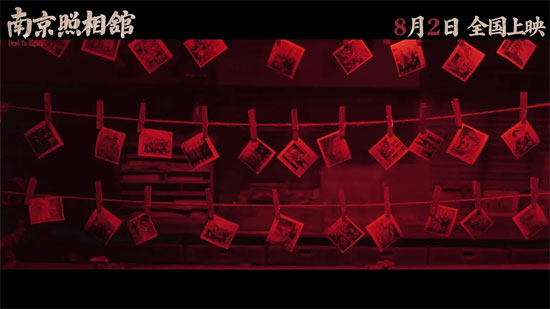
Thinking back to the side story in “Dead To Rights,” it’s actually the same as the film’s external narrative—both are about storytelling and propaganda regarding war and massacres… In this regard, Western filmmakers led by Jews truly excel at their craft.
In terms of technique, we may not be able to match them, and there is still much to learn. However, there is one thing I believe we can do better and go further: we will not distort history by omitting key parts, and we will always uphold the belief of “remembering history and striving to strengthen ourselves,” looking back at the past, observing the present, and looking toward the future.
Please specify:Anime Phone Cases » Dead To Rights 南京照相館 2025 Film Review: Great, it can explode!